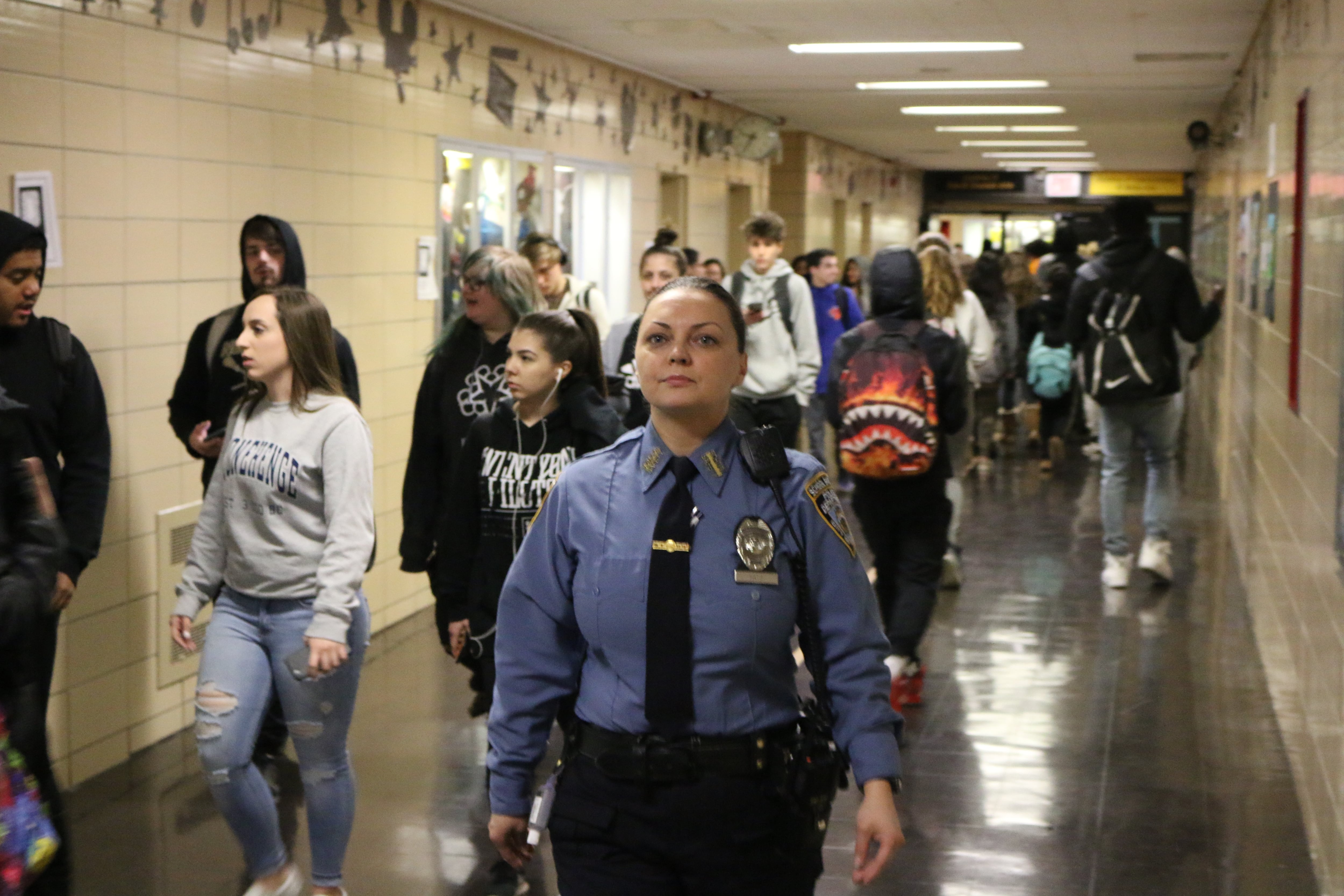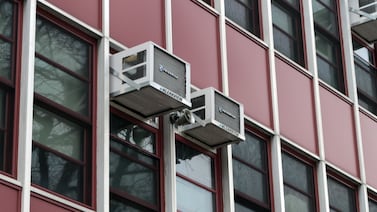Sign up for Chalkbeat New York’s free daily newsletter to keep up with NYC’s public schools.
New York City’s Police Department is launching a tip line that would allow all members of school communities to report concerns about safety and mental health, though the idea has raised concerns about how law enforcement officials will use the information.
In addition to reports of potential threats against schools or other safety issues, the tip line “will also help support mental health concerns, bullying, cyberbullying, and self-harm concerns” said Inspector Kevin Taylor, head of the Police Department’s school safety division, during a City Council hearing Wednesday.
Police officials previously indicated plans to roll out the tip line this fall. A department spokesperson did not offer a more specific timeline for when it will go live.
Taylor said anyone connected to school communities, or members of the general public, will be able to report campus safety concerns 24 hours a day for any public school, including charters. Tips will be collected by phone, text message, or through an app called SaferWatch.
The move comes as concerns about school safety and mental health have intensified. Even as violent crime has trended down, the number of shooting victims under age 18 has spiked. The number of weapons confiscated on school grounds also ticked up about 9% last school year, and suspensions also trended up, though data for the full year is not yet available. Meanwhile, the number of school safety agents remains far below pre-pandemic levels.
One Bronx school administrator said she would welcome an anonymous school safety tip line. In one instance, she said a student resorted to creating a fake social media account to discreetly alert her about a screenshot that showed students with weapons in the building.
“Having a way they could report anonymously and feel comfortable would be so good,” she wrote.
But multiple advocates raised concerns about the Police Department soliciting information related to bullying and students’ mental health, and state law indicates discipline issues should be handled by school staff rather than law enforcement.
“The police should not deal with students’ mental health or behavioral issues at all, including bullying,” said Andrea Ortiz, the membership and campaign director at the Dignity in Schools Campaign New York, a group that advocates against punitive discipline. “Police are not equipped to help them in that process, so why would they be the ones to collect that information except to use it in criminalizing ways?”
A police spokesperson declined to elaborate on how information collected through the tip line will be used or why the department would gather information on bullying given that there is an existing process for reporting those issues.
Meanwhile, the union that represents school safety agents was not enthusiastic about the new reporting tools and pressed the city to hire more agents instead. “Other ideas and initiatives to stem well documented school related violence cannot substitute for more dedicated school safety agents,” Hank Sheinkopf, a spokesperson for Teamsters Local 237, wrote in a text message.
Separately, Taylor said that the city is piloting an app called SaferWatch that could function as a “panic button” that allows school safety agents to more quickly report emergencies, including shootings near or on school grounds.
He indicated using the technology was inspired by a visit to Parkland, Florida, where 17 students and staff were killed in a 2018 school shooting. In response, New York passed a law encouraging schools to adopt silent panic alarm systems.
Eventually, the app will be available to students and parents and may notify them about “serious situations that are happening in school,” Taylor said.
The app is currently being piloted at five schools: Bronx High School of Science, Brooklyn Technical High School, Hillcrest High School in Queens, Stuyvesant High School in Manhattan, and P.S. 78 on Staten Island. Taylor said the city plans to expand the app citywide, but didn’t offer a timeline.
Students and staff at Stuyvesant and Bronx Science said they hadn’t heard much about the new app and weren’t sure how it was being used on campus.
Vanessa Chen, a senior at Stuyvesant, said being able to quickly report an incident through a smartphone app could be helpful, but she also wondered if it could lead to lots of false alarms. “A lot of these threats that come to our school aren’t real,” she said. “I think there comes a question of whether there’s any secondary fact-check.”
During the hearing on Wednesday, City Councilperson Jennifer Gutiérrez also raised questions about how students would use it in an emergency since some schools require that students turn in their phones during the day.
“I’ve seen this administration move forward with a number of …these new apps, and there’s a lot of holes missing,” Gutiérrez said.
Taylor indicated the priority would be to install the app on school safety agents’ phones, but hoped it could be adopted more widely among families and staff.
A police spokesperson didn’t respond to a question about how the app would enable a faster emergency response compared with school safety agents radioing for help or dialing 911. They also declined to say how much the new initiatives would cost.
Given that every school has police department safety agents stationed in them, some advocates said there was little reason to invest in additional technologies that they worry could further expand the police department’s role in schools, especially as City Hall is ordering city agencies to cut their budgets.
“We’re taking more resources from schools while the NYPD is announcing ways they can get more involved in schools,” said Johanna Miller, director of the education policy center at the New York Civil Liberties Union. “That’s absolutely the wrong direction.”
Alex Zimmerman is a reporter for Chalkbeat New York, covering NYC public schools. Contact Alex at azimmerman@chalkbeat.org.





